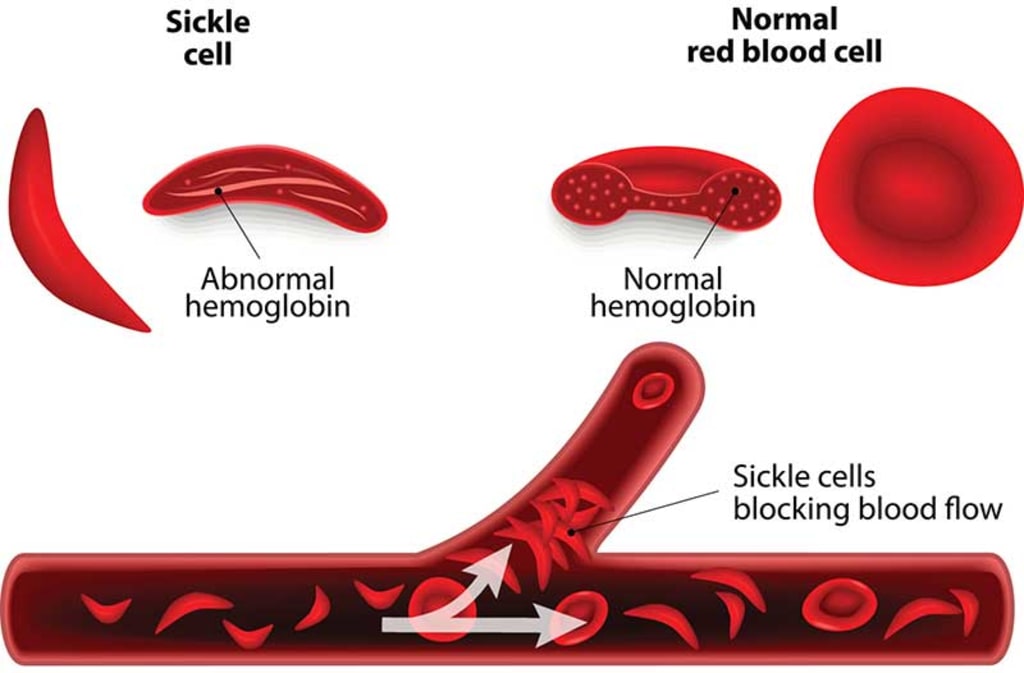Understanding Sickle Cell Disease: Disparities and Opportunities for Better Care
Sickle cell disease

Introduction:
Starting life with sickle cell disease poses challenges, especially for babies born in disadvantaged areas. A recent study, presented at the American Society of Hematology's annual meeting, sheds light on significant findings regarding the prevalence and social factors associated with sickle cell disease births.
Key Findings:
Disadvantaged Areas and Births: Almost two-thirds of babies born with sickle cell disease come from disadvantaged areas, revealing a concerning link between socio-economic conditions and the prevalence of this genetic blood disorder.
State Disparities: The study uncovers wide variations among states in the rate of sickle cell disease births in areas with crowded housing and limited transportation options.
Public Health Implications: Researchers emphasize the importance of using this data to guide public health efforts in supporting the complex needs of children with sickle cell disease and their families.
Treatment Disparities:
Underused Treatments: The study highlights the underuse of evidence-based treatments like antibiotics and hydroxyurea, which can significantly reduce symptoms but are not widely prescribed.
Gene Editing vs. Conventional Treatments: While gene-editing treatments for sickle cell disease gain attention, the under-prescribing of more affordable conventional drugs receives less focus, even though these treatments can be highly effective.
Impact on Health and Society: Uncontrolled symptoms can lead to frequent emergency department visits, affecting school attendance, employment, mental health, and social relationships.
Demographic Insights:
Racial Disparities: Sickle cell disease affects 1 in every 350 Black and non-Hispanic babies, with 90% of children born with the disease being Black.
Prevalence of Sickle Cell Anemia: More than half (57%) of children born with sickle cell disease have sickle cell anemia, causing the most debilitating symptoms.
Social Vulnerability Index (SVI): The study uses the CDC's SVI to assess county-level social vulnerability, revealing higher sickle cell birth rates in areas with high SVI scores.
Michigan's Role in the Study:
Researcher's Perspective: Sarah Reeves, a University of Michigan epidemiologist, played a crucial role in the study, examining Michigan's sickle cell population and the care they receive.
Local Efforts: Reeves collaborated with the Michigan Department of Health and Human Services to identify individuals with sickle cell disease and ensure they have access to necessary health care coverage.
Underused Treatments in Michigan: The study indicates that even in Michigan, there is underuse of antibiotics and hydroxyurea, highlighting the need for improved awareness and access to these treatments.
Conclusion:
The study provides essential insights into the rates and variations in sickle cell disease births, emphasizing the impact of social vulnerability. It calls for increased attention to evidence-based treatments, addressing disparities in care, and focusing on public health initiatives to support affected children and their families.
In moving forward, the findings stress the importance of collaborative efforts between researchers, healthcare providers, and policymakers to bridge gaps in care and ensure that all children, regardless of socio-economic background, receive the necessary support and treatments for sickle cell disease.The coverage is part of the Children's Special Health Care Services insurance program but since late 2021 has covered adults with sickle cell disease too.She and her colleagues have also shown the vast underuse of antibiotics and hydroxyurea nationally in previously published studies, as well as the underuse of transcranial Doppler ultrasound scans to detect constricted flow in the arteries supplying the brain, which can predict stroke risk.Reeves collaborated with the Michigan Department of Health and Human Services to identify individuals with sickle cell disease and ensure they have access to necessary health care coverage.More than half (57%) of children born with sickle cell disease have sickle cell anemia, causing the most debilitating symptoms.Gene Editing vs. Conventional Treatments: While gene-editing treatments for sickle cell disease gain attention, the under-prescribing of more affordable conventional drugs receives less focus, even though these treatments can be highly effective.
Summary.
A recent study presented at a medical meeting revealed that nearly two-thirds of babies born with sickle cell disease come from disadvantaged areas. This means that babies starting life with this genetic blood disorder often face additional challenges. The study also found differences among states in the rates of sickle cell disease births, emphasizing the impact of crowded housing and limited transportation options in certain areas.Researchers suggest that understanding these findings can help public health authorities better support children with sickle cell disease and their families. The study highlights the underuse of effective treatments, like antibiotics and hydroxyurea, which can ease symptoms but aren't widely prescribed.The research focused on the Social Vulnerability Index (SVI) to assess areas with higher vulnerability, revealing that sickle cell birth rates were higher in these places. Michigan played a key role in the study, with efforts to understand the state's sickle cell population and improve access to healthcare coveragethe study calls for increased attention to evidence-based treatments, addressing disparities, and supporting public health initiatives to assist children with sickle cell disease and their families. Bridging these gaps requires collaboration among researchers, healthcare providers, and policymakers to ensure all children receive necessary care, regardless of their background.





Comments (2)
NICE
GOOD